Feb
21
2012
or The New Jerusalem has a Moat

“I know your works: you are neither cold nor hot.
Would that you were either cold or hot!” (Revelation 3:15)
The world is a cosmic Tabernacle. The first domain of Mediatory Man was between the waters. The waters below (springs) were necessary for life but they were not “a place to live.” The waters above did likewise. However, these were temporary veils, boundaries to be crossed in an increasing advance-by-faith.
Continue reading
Comments Off | tags: Creation Week, Crystal Sea, Genesis, Laver, New Jerusalem, Noah, Revelation, Tabernacle, The flood | posted in Bible Matrix, Biblical Theology, Creation, The Last Days
Sep
28
2010
or The Universe is Flat
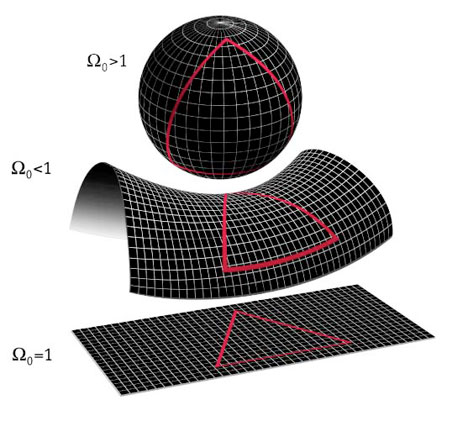 The three density ratios (Ω omega) and the corresponding cosmological morphology. (Goddard Space Flight Center WMAP Cosmology)
The three density ratios (Ω omega) and the corresponding cosmological morphology. (Goddard Space Flight Center WMAP Cosmology)
Therefore, brethren, having boldness to enter the Holiest by the blood of Jesus, by a new and living way which He consecrated for us, through the veil, that is, His flesh, and having a High Priest over the house of God, let us draw near with a true heart in full assurance of faith, having our hearts sprinkled from an evil conscience and our bodies washed with pure water. (Hebrews 10:19-22)
The “firmament” is the most troublesome element of the Creation week. Even when we understand its symbolic counterpart in the Tabernacle (the veil), how do we account for its description as a physical part of the world?
On Day 4, God created the governing lights and put them in the firmament. If this refers to some sort of “water canopy” that later came crashing down in the Great Flood, the language referring to it as a home for stars is then visual. The Adam-to-Noah pattern puts the floodgates of heaven at “Atonement,” which means the opening of this original “proto-veil” brought men face-to-face with the Ark/throne of God and washed away the sin of the world, quite literally. All flesh was cut off. All sin was covered. And it was the end of that Covenant. The sky was rolled up like a scroll. In Noah, God founded a new heavens and a new (mediatory) Altar-Land. Symbolically, the old sun, moon and stars came crashing down. They were the “mighty men” of Genesis 6. Symbolically, God put new rulers in the firmament: a body of men and animals in a covered vessel.
But, of course, the actual governing lights remained. So, there remains something beyond this original watery “sea.” The word translated “firmament” means something flat, beaten out like metal. It is architectural. Cosmologists now tell us that the universe may well be both spherical, hyperbolic and/or “flat,” a bit like the surface of the earth, I guess. [1] God speaks of the mediatory Land as flat because it is an Altar. [2] Space is a veil between men and the throne of God. Filled with lights, it pictures for us the Holy Place before God’s throne, which is populated with angels and the redeemed. This cosmic hall of government resembled a crystal sea.
But there is something strange about the account of the creation of this veil, this dark garment stretched out on Day 2. Like the “waters above” of the original Covenant, space itself has a built-in obsolescence.
Continue reading
6 comments | tags: Abraham, Creation Week, Genesis, Pentecost, The flood | posted in Against Hyperpreterism, Bible Matrix, Biblical Theology, Creation, The Restoration Era
Mar
1
2010
The Bible vindicated yet again, by a site that dwarfs Pompeii
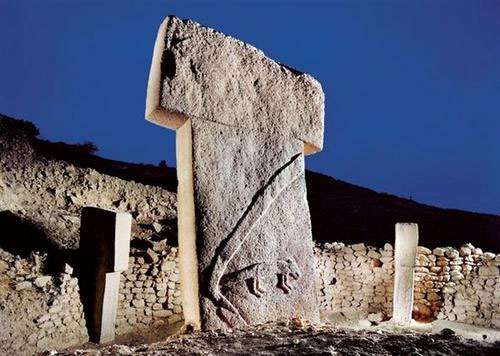
Ben Witherington comments on the unearthing of a huge temple complex and its relevance to Genesis:
This temple lies west of the Biblical plain called Haran and is only 20 miles from the Syrian border. This places it right in the fertile crescent which begins below modern day Iraq, includings the Tigris and Euphrates rivers and winds its way north through Syria and into eastern Turkey. This is the world not only of Genesis, but of the great Anatolian civilization of the Hittites (yes those Hittites as in Uriah the Hittite—husband of Bathsheba)… Klaus Schmidt and his team of Kurdish diggers have uncovered an enormous temple complex that pre-dates the Great Pyramids by some 7,000 years and Stonehenge by at least 6,000 years!… After 12 years of hard work, Schmidt has found at least four temple complexes. The radar scans of the area indicate there is a huge amount more to uncover here. And Schmidt has a thesis about this temple complex—here is a short excerpt from the Newsweek article on this:
“Schmidt’s thesis is simple and bold: it was the urge to worship that brought mankind together in the very first urban conglomerations. The need to build and maintain this temple, he says, drove the builders to seek stable food sources, like grains and animals that could be domesticated, and then to settle down to guard their new way of life. The temple begat the city.”
The importance of this find for Biblical thinking is this—the Bible says that from the outset, human beings were created in God’s image. Human beings were religious creatures from Day One. Archaeologists and sociologists have long dismissed this theory saying organized religion comes much later in the game than the beginning of civilization and city building. As Ian Holder director of Stanford’s prestigous archaeology program says— this is a game changer. Indeed, it changes everything experts in the Neolithic era have been thinking. Schmidt is saying that religion is the cause of civilization, not the result of it. Towns were built to be near the Temple complex. Agriculture was undertaken to feed those living there and supply the temple complex, and so on. The first instincts of humans were to put religion first. Maybe there is more to that Genesis story than some have been willing to think or admit. Maybe human beings are inherently homo religiosis.
Continue reading
Comments Off | tags: Archaeology, Ben Witherington, Genesis, The flood | posted in Creation, Quotes
Feb
11
2010
 God took on a body, from the dust, in Adam. A trillion particles of inanimate, dead stuff pulled together and organised into the most complex system in the cosmos, an organic machine capable of feats we are yet to discover.
God took on a body, from the dust, in Adam. A trillion particles of inanimate, dead stuff pulled together and organised into the most complex system in the cosmos, an organic machine capable of feats we are yet to discover.
Adam, as Covenant head, also took on a “body.” A Divine Handful of flesh and bone, dead or dying by any human measure, organised into a being more palatial and lavish than any male eye is worthy to behold.
Continue reading
3 comments | tags: Abraham, David, Film, goliath, Herod, Nimrod, Satan, The flood, Totus Christus, Totus Diabolus | posted in Biblical Theology, The Last Days, Totus Christus
Jan
13
2010
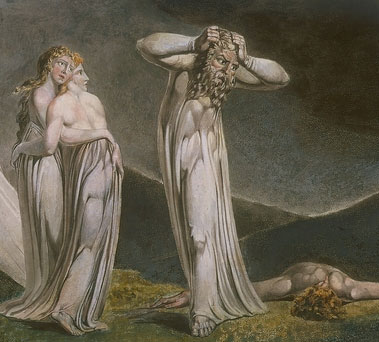
“Peter came to Him and said, ‘Lord, how often shall my brother sin against me, and I forgive him? Up to seven times?’ Jesus said to him, ‘I do not say to you, up to seven times, but up to seventy times seven.’” (Matthew 18:21-22)
Genesis 4 seems to contain two “feast” cycles. Near the end of the first, at “Atonement”, the Lord set a mark upon Cain to protect him from vengeance. As on the Day of Covering after Adam’s sin in Eden, the full weight of the law was withheld. Cain complained that his “liability” was greater than he could bear. Cain was covered but he still went from the presence of the Lord, as the goat which carried the sins into the wilderness. It seems Cain despised mercy.
Just as the Lord and the Land were two witnesses against his crime, he now fled from the face of the Lord and the face of the Land. Only the High Priest could face God, standing in the Veil, the firmament between heaven and earth. Abel was the true facebread, the authorised priest. [1]
Continue reading
6 comments | tags: Abel, Abraham, AD70, Atonement, Azal, Cain, Esau, Genesis, Herod, Jacob, Lamech, The flood | posted in Biblical Theology, The Last Days
Sep
9
2009
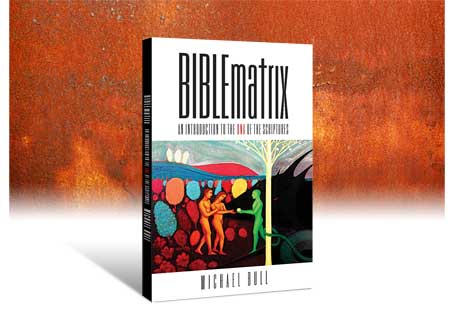
“There are two main ‘checks and balances’ that restrain us from misusing the Bible’s symbols. The first is the Bible’s consistent use of the same symbols. Continue reading
5 comments | tags: Bible Matrix, Genesis, Systematic typology, The flood, Typology | posted in Biblical Theology
Aug
8
2009

or Common Grace, Uncommon Grace
“…love your enemies, bless those who curse you, do good to those who hate you, and pray for those who spitefully use you and persecute you, that you may be sons of your Father in heaven; for He makes His sun rise on the evil and on the good, and sends rain on the just and on the unjust.” Matthew 5:44-45
Most “Bible contradictions” display our ignorance of literary forms, history, or customs. Further study always vindicates the Bible. Sometimes, however, the “contradiction” is just a misunderstanding of the way God works; a question of timing.
The supposed contradiction I want to discuss is this: if God punishes the wicked, how can He also send rain on the just and the unjust?
The content of this post has been revised and included in Bible Matrix II: The Covenant Key.
__________________________________
[1] Do you think I can find this when I need it?
[2] On the apostolic church as “two witnesses”, see: Slavery to Sabbath in Revelation 5-11
Comments Off | tags: AD70, Doug Wilson, Gratitude, Herod, Revelation, The flood | posted in Biblical Theology, Christian Life, The Last Days
Jul
9
2009
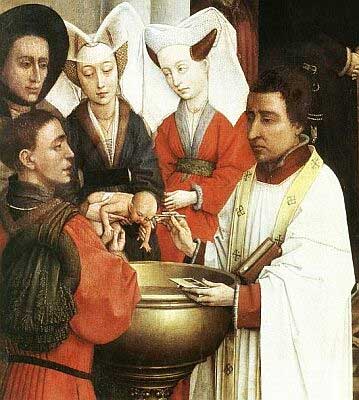
or Why Are We Baptizing the Dead?
Peter Leithart writes concerning baptism:
“In Genesis 9:11, Yahweh promises not to “cut off flesh” by water. That is the covenant with Noah.
A few chapters later, Yahweh tells Abram that he must cut off the flesh of all male children of Israel, not by water but by a knife.
Continue reading
2 comments | tags: Adam, Baptism, Circumcision, Federal Vision, John Piper, Noah, Peter Leithart, Systematic typology, The flood | posted in Christian Life
Jun
12
2009

Isaiah’s visions of Israel’s restoration have nothing to do with a future millennial golden age for the Jews, or even directly with the first century, except by the events of the Restoration era prefiguring later history. His words were for his hearers, for both their condemnation and their hope in the near future. Why do we get him wrong?
Continue reading
3 comments | tags: David, Isaiah, Millennium, Mordecai, Noah, Restoration, The flood, Zerubbabel | posted in Biblical Theology, The Last Days, The Restoration Era, Totus Christus
Apr
24
2009
“Now if anyone builds on this foundation with gold, silver, precious stones, wood, hay, straw, each one’s work will become clear; for the Day will declare it, because it will be revealed by fire; and the fire will test each one’s work, of what sort it is. If anyone’s work which he has built on it endures, he will receive a reward. If anyone’s work is burned, he will suffer loss; but he himself will be saved, yet so as through fire. Do you not know that you are the temple of God and that the Spirit of God dwells in you? If anyone defiles the temple of God, God will destroy him. For the temple of God is holy, which temple you are.” (1 Cor. 3:12-17)
Are the gold, silver and precious stones our heavenly bling? From the structure of this passage, I think what Paul is referring to is the church. If we are building disciples who remain despite trials and testing from God, we will be rewarded. The immediate context of this is the false doctrine of Judaisers, and their house of gold, silver and precious stones (Herod’s Temple and his puppet High Priest’s robes). While Paul was building a Temple out of people, Herod was busy polishing the brass on the Titanic that he knew Jesus had said would be submerged under a Gentile flood (Daniel 9:26). Herod’s precious stones didn’t make it through God’s judgment. The Day declared what it was in truth.
The question is, are our disciples a robe/house for Jesus, or are they kindling in His nostrils? When He comes to judge, what will our ministry be revealed as?
Comments Off | tags: AD70, Daniel, Herod, High Priest, Holy Spirit, Judaisers, Paul, Temple, The flood | posted in Biblical Theology, The Last Days


































